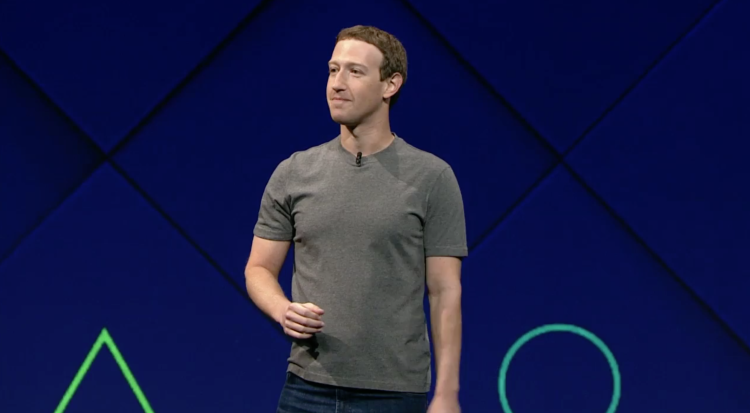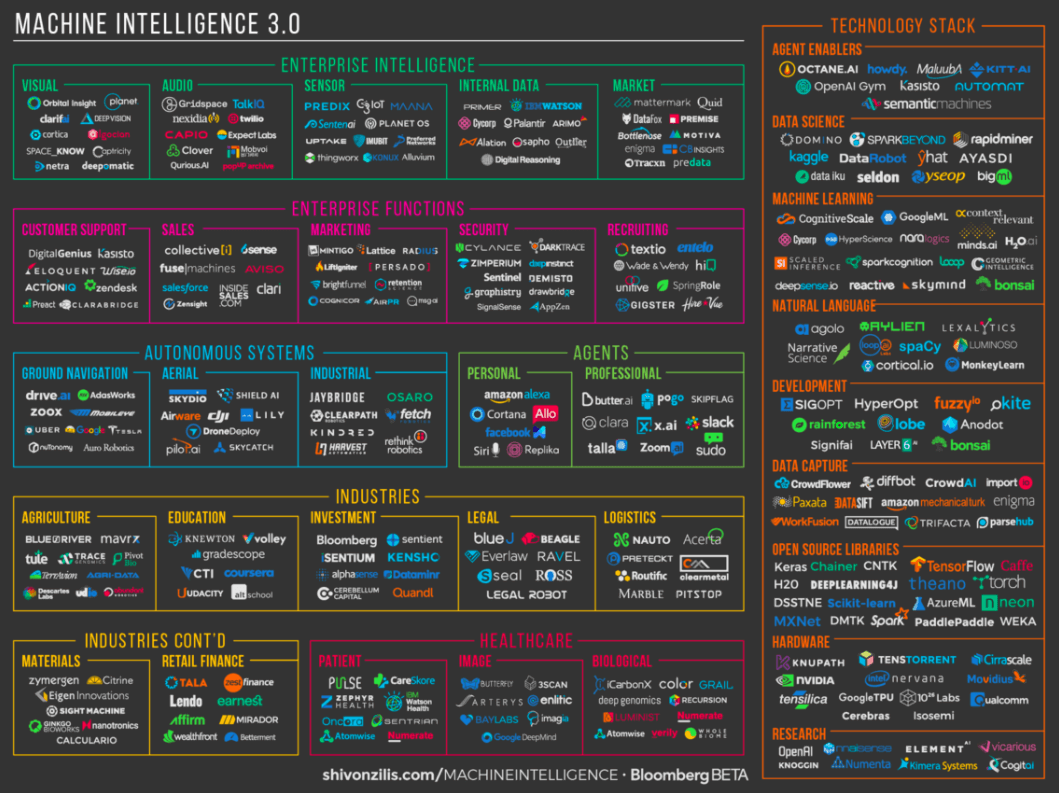Watch all the Transform 2020 sessions on-demand here.
Facebook’s F8 conference was hailed by many as a momentous shift towards a more intelligent, personal, and immersive future. Besides betting big on mobile and camera as the augmented reality platform of the near future, the social media powerhouse outlined its Messenger platform as the place where you socialize, get entertained, and shop.
Some are naturally worried about increased clutter and issues with privacy, but as Wired cofounder Kevin Kelly puts it, “vanity trumps privacy” for most consumers. I’m quite certain Facebook will succeed in making many of the announced features mainstream in the coming months and years.
While I’m a hopeless techno-optimist, I also always have first and foremost human-centered design and business lenses on. Here are some genuine value opportunities for audiences and brands alike in Facebook’s new conversational and visual universe.
Value-adding, personal brand universes
Mobile, and especially messaging on mobile, is our most personal digital space. The brands you let in and keep here get closer to skin than most friends. Which is why the space is so coveted by brands and tech platforms alike — at least before marketers get direct access to the brain. Which, btw, Facebook is also working on.
June 5th: The AI Audit in NYC
Join us next week in NYC to engage with top executive leaders, delving into strategies for auditing AI models to ensure fairness, optimal performance, and ethical compliance across diverse organizations. Secure your attendance for this exclusive invite-only event.
With the new Messenger platform, Facebook is giving brands the keys to this private space. The Discover Tab helps people to find suitable bots and get suggestions from broad categories like finance and news. It also shows brands that are popular, nearby, etc. But the real power of personalization lies in M’s learning and suggestion engine.
M can scan your conversations and suggest bots to use for a given need. If you or your group are talking about food, M can suggest restaurant reservations or delivery bots. Talk about traveling, and you might get flight and accommodation bots. With industries like finance and health facing relaxed regulation, we’re likely to get very personal recommendations in these fields too.
But to get up close and personal and stay there, brands need to offer real value in exchange. Companies like Bain list up to 30 elements of value, but you can start with a few key value generators outlined below.
Educating people about things they want or need to know is a clear proposition. I use the Wall Street Journal bot to this end every morning before the markets open, whereas Duolingo can make learning French easier by chopping lessons to snackable sizes.
Empowering people to do new things is another way to bring the goods. WTF Is That is a promising bot that is able to recognize things like herbs, bugs, or cars from photos. MeditateBot helps you get to a daily meditation rhythm and stick to it.
Optimizing people’s lives by saving them money, time, and effort has been one of the internet’s main boons and bots will accelerate this. Aeromexico, for example, has brought to Messenger a bot that cuts customer servicing time from 16 minutes to down to 2.
Connecting people used to be Nokia’s slogan, but being the world’s eminent social media platform, Facebook is now the global connector. Many Facebook bots such as the dating bot Foxsy slice and dice the connections industry further.
Expression of one’s personality is something we humans find much value in. Many bots help you project your uniqueness to your circles. ScribbleChat lets you chat by scribbling and boosts your art with nifty effects, while Rue21’s bot aims to be your personal stylist.
Entertainment is the sixth core form of delivering value. Spotify and Apple Music are both on Messenger 2.0, but Facebook is also serving games, such as the classic Pac-Man and Space Invaders, to the platform to keep audiences engaged at all times.
Access, security, and privacy are in increasing focus when designing digital services. Personal safety and comfort can certainly be seen as bringing value in a world where ever more of your life is digitalized. Facebook took a big step toward becoming the global password manager for sites and apps alike with Delegated Password Recovery, which, together with Facebook’s 2 billion users and Social Login, could render other password services such as LastPass obsolete.
After you solve the core value on offer on the base level, start thinking how to tailor the experience to what you already know about the customer, what you can start estimating with relative confidence, and what you can learn quickly by simply asking. New Facebook features such as the Handoff Protocol and ID Matching API make knowing customers and handling relationships easier across apps, bots, and sites when using multiple vendors.
I see a strong future for brands, especially in industries where active, frequent customer relationships are already nurtured, such as in finance and entertainment. Brands with more casual ties to their audiences can leverage sponsorships and partnerships — or reach deeper into their brand essence and innovate new ways to offer value on an ongoing basis.
Photogenic, immersive, and actionable brands
Mark Zuckerberg has spent the past 18 months reorganizing his main platforms Facebook, Messenger, Instagram, and WhatsApp around the smartphone camera. Taking a page out of Snap’s playbook, Facebook is encouraging photo and video as a primary means of communication and sharing.
In Facebook’s future, an AI-powered augmented reality will be overlaid on top of your media pieces and the live camera view. Brands that want to ride this wave need to think how to make their products, campaigns, and activations “photogenic.” Creating brands that people are happy to have in their photos and videos — and want to be seen with — becomes more important as Messenger 2.0 kicks into gear.
With millions of images shared across its four platforms, Facebook has arguably the largest user-generated picture portfolio in existence, and its image recognition chops are superb as a result. Company logos and packages, or any real-world object, can now trigger visual effects, stickers, and filters. For highly targeted engagement, Facebook’s new Parametric QR codes can be printed onto a window, packaging, or brochure, triggering specific features within a brand’s bot depending on the code and its placement.
Pair image recognition with location data, voice, gesture, and movement recognition, and the whole world soon adopts a new, immersive, and actionable layer. This AR layer will also be algorithmically curated, like your newsfeed, giving rise to exciting marketing opportunities. With the likes of Electronic Arts, Nike, and Warner Brothers as partners for the first wave, I believe there will be lots of content to start drawing in users.
To put the cherry on top, add in Facebook Payments and any surface, object, or scene that you can capture with a camera becomes also shoppable. This doesn’t so much augment the world as create opportunities for whole new experiences, while reducing friction and shortening the way from inspiration to action to virtually zero. In this random access world, customer journeys will need a rethink.
Not necessarily too long into the future, we might find ourselves spending lots of time on Facebook Spaces, a fully immersive virtual reality world that seems to have a shot at redeeming Second Life’s unkept promises. A world where everyone can be anything they want was teased in novels like Snow Crash over 20 years ago. With Facebook Spaces, this could finally happen.
Brands to hang with
Chat Extensions and Facebook M work for brands or bots reaching out to pairs or groups of users. They provide contextual suggestions depending on the topics being discussed. In a group setting, bots won’t yet chat with all participants, but will instead be accessed via webviews and menus.
This nevertheless delivers a multi-player experience for brands wishing to engage many people at a time. Brands like Foursquare or Tripadvisor might intervene in a conversation and offer help with deciding a restaurant or a travel destination. Decisions might be made with voting, and a restaurant or hotel could take orders, update preferences, and handle payments from each member individually.
Turn-based, social games are also something Facebook is betting will have groups of users engaged. Quite naturally, bots to guide players and to play with or against humans are in the mix. Brands can join these games by offering added perks or skills, power-ups, or other types of help.
In a group setting, an interesting opportunity is to separate features that will be used together in the group view from features that engage people individually. Especially with games, everyone might be able to see a shared view, but each individual could also have information provided by a bot or human game master that is visible to only them. Similarly, finance and health brands could host chats where the group shares and discusses some topics, but also enable private one-on-one discussions on the side.
Going down the road, you could hang with your friends in your living room, but instead of watching a $1,000 flat screen TV one channel at a time, you could each be using a $1 app to watch your personal augmented screens covering the whole wall, with one guy watching NFL, another following the French elections, while the third is chugging down TED talks.
Start now
Put simply, these tools help people and brands connect, assist, and entertain each other with maximum creativity and impact. The cost of starting to prototype things with both bots and AR/VR frames is low, so the time to start is now. There will be surely be issues to iron out, as with all rapidly growing services — but both brands and people will learn the right ways along the way. You can expect Messenger to keep growing, since people tend to go where their friends are, and stay there.
This article appeared originally on LinkedIn. Used with permission.
Sami Viitamaki is the executive director for digital at Havas, an advertising firm.



